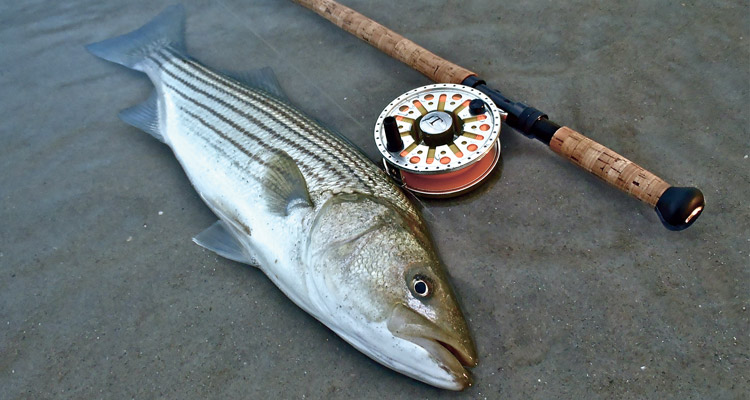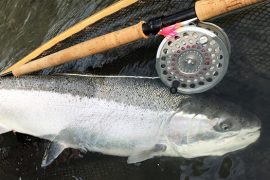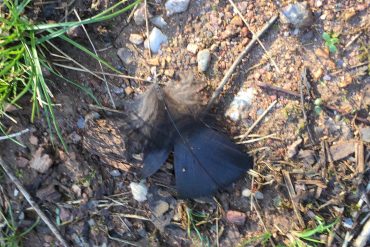
Two-handed fly rods offer a more efficient and effective way to target stripers from shore.
Hey! Nice Spey rod!”
“Thanks,” I say, not caring to offer a correction. From one perspective, the scene is entirely normal: I’m fishing a double-handed rod over big water with large flies. That makes sense, right? But, here’s the catch. Instead of a large river with salmon or steelhead, I’m fishing an estuary for striped bass.
Cue the needle over vinyl. Spey in saltwater? You bet – just hang with me for a minute.
Knowing how to fish with a double-handed rod in saltwater using Spey techniques can be a great advantage; in fact, I think it might save you in some scenarios.
Say you’re wading in an estuary at sunrise, and there are a few stripers feeding in front of you. Months of waiting, planning, and a bit of luck have all come together at this moment. You lick your lips, strip off some line, and turn around to check that your backcast is clear, only to find the sand bank rising steeply behind you with seagrass adorned by sticks and logs. You’ve got a traditional 8- to 9-weight single-handed rod in your hand. Two scenarios can play out at this point. You refuse to let the fish feed without attempting to present a fly to them, so you make a backcast and either snap it off or get it caught on the logs or grass, causing yourself frustration and wasting time. Or, second, you try to roll cast, but the technique isn’t very accurate and doesn’t allow you to shoot very much line.

Enter Spey casting, a more efficient, effective, and less-risky technique for presenting flies accurately in a tight casting situation.
What is Spey Casting?
The language around Spey casting, with its line grains measured in grams, its various loops and styles, can be confusing. It’s the form of casting that has, I’d argue, evolved the most in fly-fishing over the last decade. That evolution has been driven by experimentation, which has led to new language and some non-standardized terms.
All fly-fishing requires using the weight of the line to bend the rod to create a trampoline or slingshot-like effect that shoots line forward. In traditional overhand casting, however, it’s a combination of the momentum and weight of the line in the air that forces the rod to bend and then cast line. In Spey casting, the caster uses the surface tension of the line on the water to bend and thereby cast the line.

For me, that concept took a while to sink in. Imagine your fly rod held back at the traditional 1 o’clock position on a backcast. Now, imagine the line is not in the air above you, but is anchored to the surface a few feet to your casting side, and then, as you lift your rod back to this position, the line forms a deep bend in the air that resembles a “D”, with the straight back of the D being the rod, and the curved line of the “D” being the line in the air. When you flick the rod forward, the surface tension of the line that is at the bottom of the curve of the “D” will load or flex the rod, and force it to snap forward, shooting line out in front of you. This is the most basic concept of a Spey cast.
The Spey technique is named after the River Spey in Scotland. I was fortunate to get invited to fish the river a few years ago when I was living in England and discovered that…





